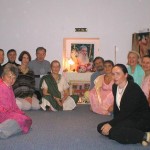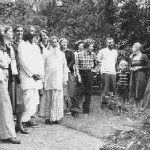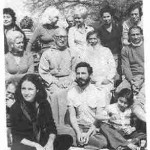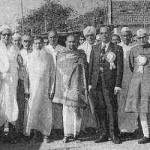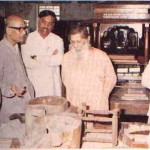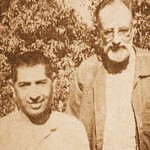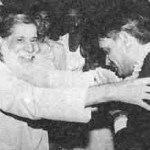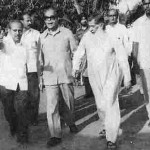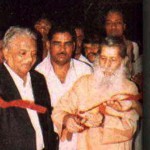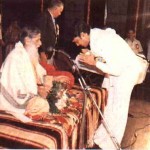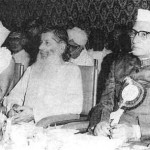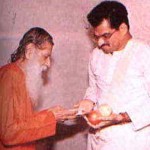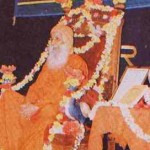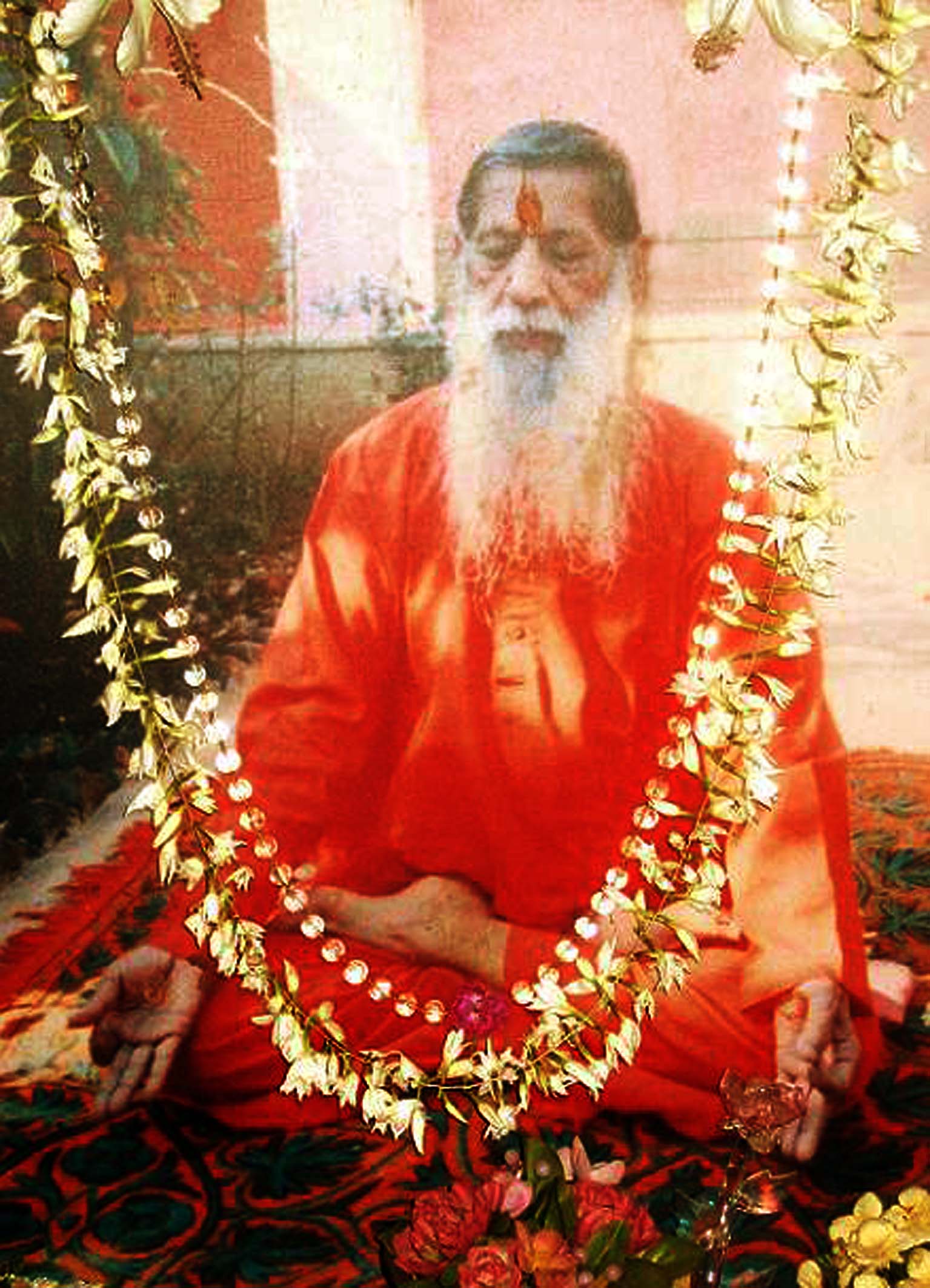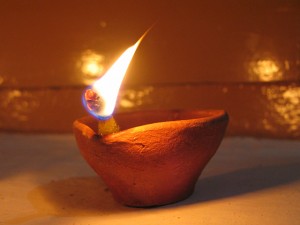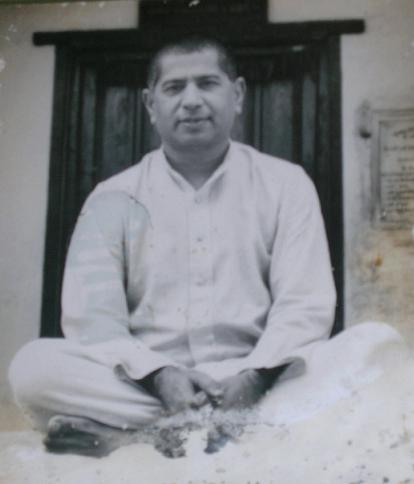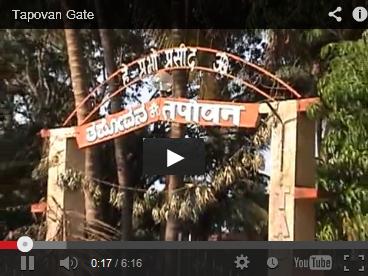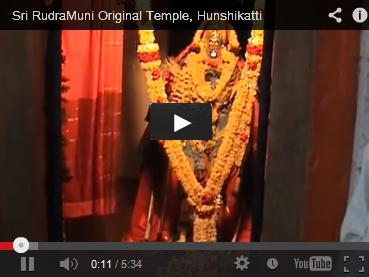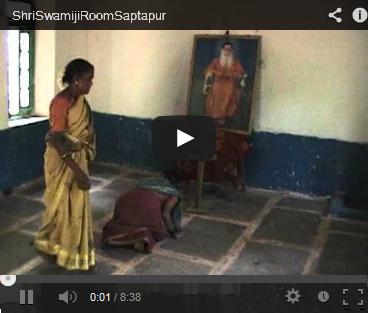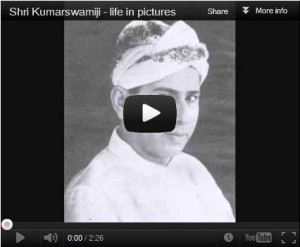Mr. Richard Matthews, had the priviledge to meet H.H.Mahatapasvi Shri Kumarswamiji at the Yoga and Spiritual Center of Mr.Peter Rendel, in England, in 1976. He visited Tapovan, and spent 14 months there. In 1980-81, he stayed at Tapovan for 11 months, learnt Shiva Yoga thoroughly, and has decided to dedicate his whole life for the propagation of Shiva Yoga and the teachings of Swamiji. He is conducting Shiva Yoga center, in Flat -4, King Arthur’s Castle Hotel, Flate Tintagel, North Cornwall, England PL34, ADQ
For the third eye to function an intake of energy through the Brow Chakra is required. The Pituitary gland, corresponding to the Brow Chakra is connected to the pineal gland, corresponding to the Sahastrar Chakra through the optic thalamic nerve. The third eye, as all eyes do, requires a lens for focusing the appropriate images. The lens for the third eye is in front of the forehead, and we find its construction within the surface of the magnetic aura.
The Ishtalinga which the practitioner gazes on during the practice of Shiva-yoga provides the requisite lens for opening the third eye. The Ishtalinga which is placed on the palm of the left hand during practice, is made of a light grey slate stone, covered with a durable paste. This coating is blue-black or indigo, the colour of the Ajna chakra. The mutual colours act and react on each other which enhances the power of magnetic force. During the practice of Shiva-yoga, a light is placed behind the left shoulder- candle or wick lamp – and the room must be completely darkened. The hand is brought in line with the Ajna-chakra, and the aspirant gazes with half closed eyes at the speck of light reflected in the center of the ishtalinga. A mantra, Om Namaha Shivay is repeated internally. (more about this will be explained in the next article.)
The concentrated gaze, or ‘Animisha Drishti’, on the ling is essential because, through this, the magnetic force is generated, galvanizing into activity the Pineal gland. When this activity takes place, the God-consciousness residing in it descends through the optic-thalmic nerve, to unite with the individual consciousness within the pituitary gland. H.H. Shri Kumarswamiji says: “this meeting takes place in the center between the eyebrows and brings about the efflorescence of intuitive faculties.”
Facing Oneself.
The whole aim of Shiva-yoga is to transcend the symbol through the symbol. When the gaze is unblinking the distinction between subject and object, within and without, is lost, and the aspirant becomes identified with the truth. He begins to see his own face, which means that he begins to see himself as he is. He must face the darkness as well as the light within himself. Only then will he know himself; that is he becomes self realized. The difficulty we all experience if facing the truth within ourselves is why the goal of self realization is hard to attain. Facing the truth within oneself means taking responsibility for one’s own actions and not laying them at the feet of external circumstances or some external entity. All the forces of light and darkness exist within consciousness and are not external to it. The concept of external and internal is only an artificial distinction brought about by the mind. However, great or vast its powers may be, intellectual knowledge is indirect, proceeding through analysis, and discursive by reason of its tendency to separate.
Since I was a young child, I have had claiaudient and clairvoyant experiences. On many occasions those who were speaking to me told me: “We are in your pineal gland.” As a child of eight I was told I would be given a ‘stone’ to place in my left hand and this would help me to know myself. This indeed has come true through my practice of Shiva-yoga.
Aum Shanti Shanti Shanti —- Richard Matthews
